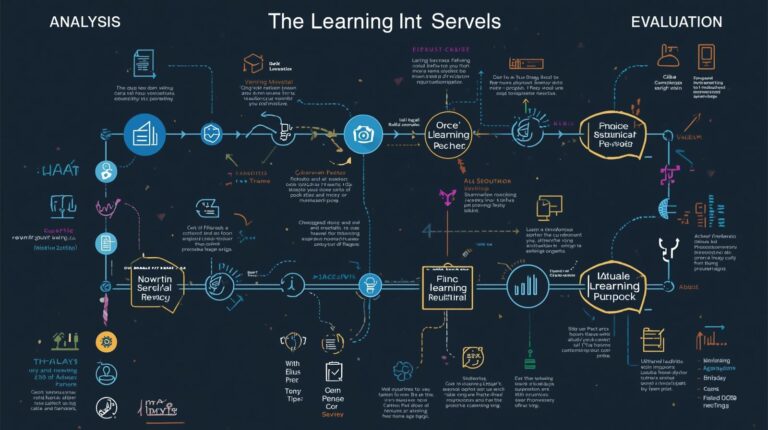Manipulation – Mastering Control and Skill in Adult Physical Learning
In the world of physical skills, observation and imitation are just the starting points. Once you’ve seen how a skill is performed and successfully imitated it, the next crucial step is manipulation. This stage is all about gaining control over the movements, refining them, and beginning to execute the skill independently and accurately. For adult learners, manipulation bridges the gap between replication and mastery, transforming initial attempts into deliberate, purposeful action.
What Manipulation Means in Adult Learning
In the psychomotor domain, manipulation refers to the learner’s ability to control and handle objects, tools, or their own body with precision and confidence. It is the stage where learners practice executing tasks repeatedly, adjusting their approach based on feedback, and becoming comfortable with the mechanics of the skill. Unlike imitation, which focuses on copying, manipulation emphasizes active engagement—moving beyond replication to understanding how each action affects the outcome.
Manipulation is essential for real-world applications. Whether it’s operating machinery in a workplace, performing a surgical procedure, or mastering a musical instrument, being able to manipulate components skillfully ensures accuracy, efficiency, and safety. Adult learners who practice manipulation are better prepared to handle unexpected challenges because they have a deeper understanding of the mechanics behind their actions.
The Psychology and Neuroscience of Manipulation
The brain plays a central role in manipulation. As learners repeatedly practice a skill, neural pathways strengthen, creating muscle memory. This process allows movements to become smoother, more coordinated, and increasingly automatic. The interplay of the cerebellum and motor cortex ensures that fine-tuned control over motions is achieved, enhancing precision and timing.
Manipulation also enhances cognitive understanding. Adults who actively manipulate tools or objects while practicing a skill are not only developing physical ability—they are engaging problem-solving, spatial reasoning, and critical thinking simultaneously. This integration of mind and body makes learning more effective and long-lasting.
Strategies for Effective Manipulation
Mastering manipulation requires a structured approach that balances practice with reflection. Here are key strategies for adult learners:
1. Start Small: Begin with simplified versions of the skill or task. Focus on individual components before attempting the complete action. For example, when learning to assemble equipment, start with a single part and perfect its placement before moving on.
2. Use Deliberate Practice: Repetition alone isn’t enough. Practice with intention. Pay attention to how movements feel, where errors occur, and how adjustments affect outcomes. This mindful approach ensures that each repetition reinforces correct technique.
3. Seek Feedback: Feedback is invaluable during manipulation. Guidance from instructors, peers, or technology-based tools helps learners correct mistakes early and refine movements effectively.
4. Integrate Sensory Input: Incorporate visual, tactile, and auditory cues. Feeling the motion, listening to the sounds associated with correct execution, and observing results can reinforce learning.
5. Adjust and Adapt: Physical skills often require flexibility. As learners manipulate movements, they should practice adapting to different conditions or slight variations, ensuring the skill is versatile and resilient in real-world applications.
Real-World Applications of Manipulation
Manipulation is fundamental across many industries and everyday scenarios:
Workplace Skills: In manufacturing or lab settings, precise manipulation of tools and equipment is crucial for safety and efficiency. Employees who have mastered manipulation are more confident, make fewer mistakes, and work more productively.
Healthcare: Surgeons, nurses, and therapists rely heavily on manipulation to perform procedures safely and effectively. Mastery of fine motor control ensures optimal outcomes for patients.
Sports and Fitness: Athletes constantly refine their manipulation skills, whether it’s controlling a ball, adjusting their stance, or executing complex routines with precision.
Arts and Crafts: Musicians, painters, and artisans depend on manipulation to create consistently high-quality work. Their ability to control tools and instruments directly impacts their performance.
Overcoming Challenges in Manipulation
Adult learners may face challenges when advancing to manipulation, including:
Frustration with Imperfection: Unlike imitation, manipulation often exposes errors in control, which can be discouraging. Patience and persistence are key.
Difficulty with Coordination: Complex movements require synchronized use of multiple muscles. Breaking down movements and practicing them individually can help.
Fear of Failure: Especially in high-stakes environments, adults may hesitate to fully engage in manipulation. Safe, low-pressure practice environments encourage experimentation and learning.
Inconsistent Feedback: Without guidance, learners may reinforce incorrect techniques. Regular feedback ensures that manipulation develops correctly.
Addressing these challenges involves structured practice, supportive feedback, and creating opportunities for learners to experiment safely.
The Benefits of Mastering Manipulation
When adult learners successfully engage in manipulation, the benefits are profound:
Increased Accuracy: Repeated, mindful practice ensures that movements are precise and effective.
Confidence in Execution: Mastering control builds self-assurance in performing tasks independently.
Skill Retention: Physical skills practiced through manipulation are retained longer due to strengthened muscle memory.
Problem-Solving Ability: As learners adjust movements and respond to challenges, they develop critical thinking and adaptive skills.
Preparation for Advanced Skills: Mastery of manipulation forms the foundation for precision, articulation, and eventually naturalization, completing the psychomotor skill cycle.
Integrating Manipulation with Other Psychomotor Skills
Manipulation is the bridge between imitation and precision. After imitating a skill, manipulation allows learners to control and refine movements, setting the stage for the next phases:
Precision: Once learners can manipulate effectively, they focus on perfecting the accuracy of movements.
Articulation: Skills are combined into sequences, coordinated smoothly and efficiently.
Naturalization: Eventually, the skill becomes second nature, performed effortlessly and automatically.
This progression ensures that adult learners develop both competence and confidence, enabling them to apply physical skills in diverse, real-world contexts.
Conclusion
Manipulation is a critical step in adult physical learning. It moves learners beyond observation and imitation, challenging them to take control, refine their actions, and achieve competence. By practicing deliberately, integrating feedback, and engaging both mind and body, adult learners can master manipulation and prepare for higher levels of skill development.
In any context—whether the workplace, sports, healthcare, or personal pursuits—manipulation empowers learners to execute actions with accuracy, confidence, and adaptability. Recognizing its importance in the psychomotor domain ensures that adult learning is not just about knowing or watching, but about doing and excelling.


